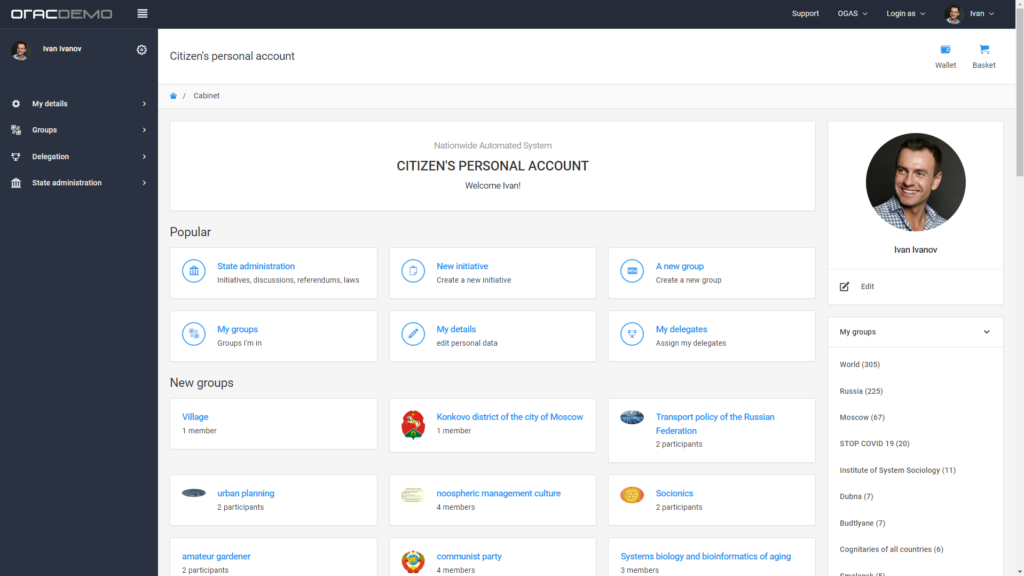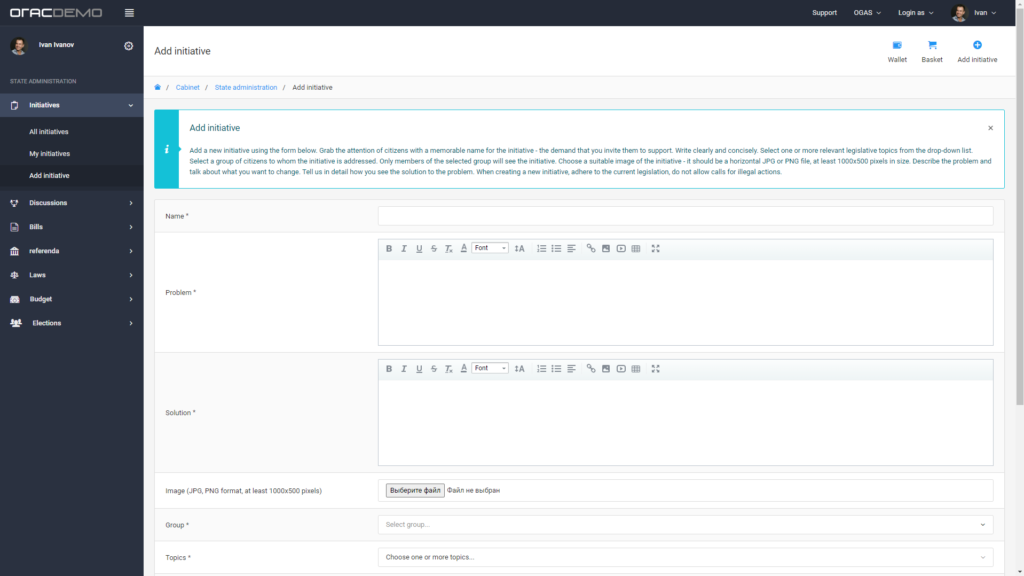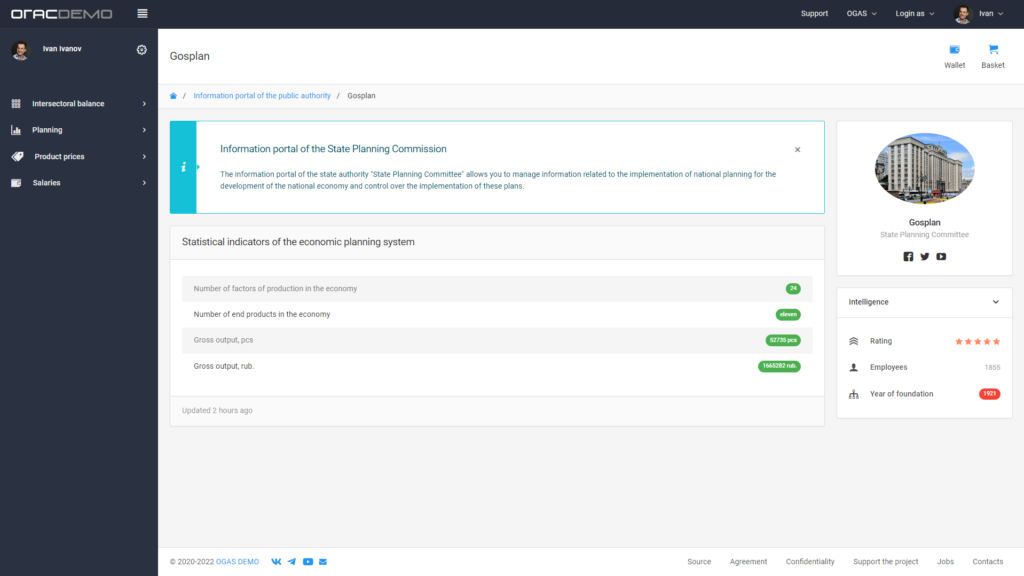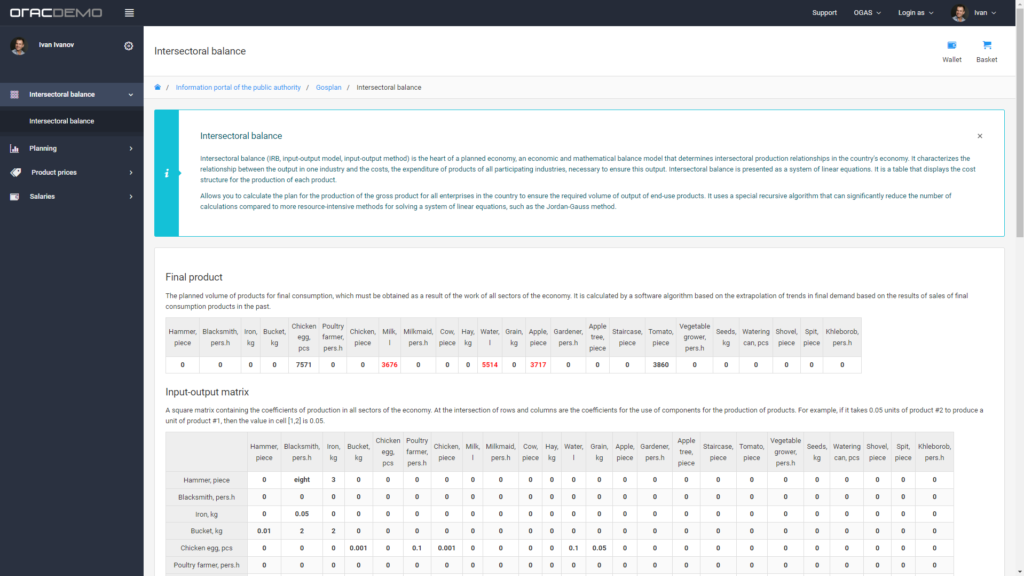Grigory Kopanev
Introduction
The famous Soviet cyberneticist Nikolai Veduta wrote in his 1971 book Economic Cybernetics:
«Each individual has multiple needs for which he or she has specific productive functions. These functions are determined by society. On the basis of information about people’s needs, society forms information about societal needs. From the information on social needs and production possibilities it forms the information on the tasks of social production and the limitation of non-productive consumption. The tasks of social production can only be realised when each individual member of society receives information about the productive function assigned to him by society and, in accordance with this information, manages at his workplace the totality of the means of production assigned to him.
In this way, information about needs and resources moves upwards from the individual, reaches the top of the social production hierarchy and from there descends downwards, returning to the individual in the form of production tasks and non-productive consumption constraints.
Human beings act as both consumers and producers. Between the human consumer and the human producer there is a vast, complex system of collecting, transmitting, storing, processing and releasing information. In this system, information about needs and resources is transformed according to well-defined laws into information about the necessary influences on the means of production and the constraints on non-productive consumption determined by resource constraints.
Achievements of modern science and technology allow us to assert that all information processes functioning between human-consumers and human-producers can be automated, i.e. performed without people and better than they are performed by humans. But this task can be solved only as a result of the hardest work of scientists, economists, engineers and workers, by the joint efforts of science and production».
As early as 1971, the USSR dreamed of creating an automated system that would gather information about societal needs and transform it into specific production tasks to be sent to each individual workplace in each enterprise in the country. Although this task seemed at the time to be incredibly complex and difficult to achieve, progress towards its realisation began in the USSR as early as the 1960s and 1970s.
OGAS

The project of the «National Automated System for Computation and Information Processing» (OGAS), a system of automated management of the USSR economy based on the principles of cybernetics and comprising a computer network linking data collection centres located in all regions of the country, appeared in the late 1950s and was initially developed under the leadership of Anatoly Kitov and in the 1960s-70s under the guidance of Academician Viktor Glushkov.
The project was partly put into practice and an «Automated Scheduling System» (ASPS) was created. It was put into operation at the end of the 1970s -and was to be an integral part of the OGAS. The technical design of OGAS appeared in the early 1980s, but was never approved by the USSR leadership.
Since the 1990s, the OGAS project has lost relevance due to the transition of the USSR from planned to market economy management methods.
OGAS 2.0
These days, a new window of opportunity is opening for such a project and the construction of a new type of state, governed by the principles of cybernetics.
The current level of development of modern computer technology and communication networks is far ahead of the possibilities available in Soviet times and makes the implementation of the Nationwide Automated System project much cheaper, simpler and therefore more realistic.
The computing power of today’s computers can handle the complex tasks of recording the needs of citizens, planning the production and distribution of goods and services. The availability of personal computers and smartphones in every home will make it possible to involve every citizen of the country in the system. Artificial intelligence algorithms will be able to replace a significant part of the state bureaucracy.
The current state of digital technologies will make it possible to implement the project of the Nationwide Automated System at a qualitatively higher level. The new version of the OGAS 2.0 system, created using all modern software, hardware and networking technologies, will be able to replace many state and non-state management systems in place today.
OGAS 2.0 will be a cybernetic control system for all spheres of society. It will become the electronic core of a new type of state. Building a cybernetic state will make it possible to create a truly stable, progressive, just and prosperous society for all.
THE GIST OF THE IDEA

OGAS 2.0 is a heavy-duty, comprehensive, feature-rich open-source digital platform that citizens, businesses and public authorities will be able to access through the system’s web interface via a secure Internet protocol using an ordinary web browser from any digital device – smartphone, tablet, laptop or personal computer.
The system will be logically centralised and physically decentralised, thus ensuring compliance with uniform laws, rules and principles, combined with maximum security and reliability of the system.
The hardware of the digital platform will consist of several heavy-duty data centres (DPCs) located in major cities connected by high-speed links.
The software code of the platform will be developed on the basis of a specialised software framework. The entire software code will be open for public control, and every citizen will be able to control the logic and algorithms of the system.
All transactions in the system will be stored in a single nationwide blockchain, which will be distributed to the computers of all citizens of the country and through which the invariability of the data stored in the system can be guaranteed. Blockchain technology is intended to be used solely to guarantee the immutability of data stored in the system’s central database. It is not necessary to use blockchain to store operational information or to make monetary transactions. All data in the system will be stored in a conventional relational database, which is much faster to process than blockchain.
All software modules and interfaces will be multilingual and multicurrency. This will make it possible to expand the system in the future to include citizens of other countries of the world. The scalability of the system can be ensured up to and including the creation of a single world state.
- The system will be able to collect information on the needs of the country’s citizens.
- Based on the data collected, a unified mathematical model of the economy will be created using dynamic inter-industry balancing technology, on the basis of which artificial intelligence software algorithms will generate production plans for all enterprises in the country.
- The mathematical model of the economy will be optimised to best meet societal needs and objectives.
- Elections at all levels will be held electronically.
- All laws will be approved by popular electronic referenda.
- Laws approved by referendums are translated into software code and become part of the algorithm of the nationwide digital platform.
- The system also manages other aspects of society, such as finance, transport, education, health care, etc.i
OGAS 2.0 STRUCTURE
OGAS 2.0 will consist of a large number of complex information subsystems that are closely interlinked with each other:
- CENI – State-wide electoral and referendum system
- GFSF – general government financial system
- GGCS – State-wide production management system
- GGCS – Government-wide system for the ordering of goods and services
- OGVRP – State-wide system of work and employment
- GGTSL – State-wide transport and logistics system
- OGSRE – State-wide resource and energy management system
- and other subsystems
IMPLEMENTATION RESULT
OGAS 2.0, after its full-scale implementation, will become a full-fledged digital control system for all spheres of state and society. It will make it possible to manage the state and the economy on a scientific basis, using precise mathematical calculation and automated strategic planning, radically increase labour productivity in all spheres, optimise managerial processes, create real democracy, achieve a truly equitable distribution of material wealth, increase the welfare of citizens, simplify and improve the lives of ordinary people.
OGAS 2.0 DEMO

A demo version of the OGAS 2.0 system is under development at: https://ogasdemo.ru
The OGAS-DEMO portal is a simplified, demonstration version of the OGAS system. It is intended to demonstrate its capabilities and the benefits that a full-scale OGAS system can bring. The portal cannot fully replace the full OGAS. It will require multi-billion dollar financial outlays, major changes to the government and the economy, the involvement of a large number of highly qualified professionals, full government support at the highest level and public ownership of the means of production.
The development of the OGAS-DEMO portal is based on the Bitrix CMS. The programming languages used are PHP, Javascript and the MySQL database.
The following functionality is now fully or partially programmed and operational:
- Citizen’s personal account (personal information about a citizen, purchasing goods and services, paying for goods and services from a personal account, etc.)
- Functionality of groups (geographic groups, thematic groups, professional groups, political groups, etc. Within the groups, different issues can be discussed and decisions can be made through direct/legal democracy mechanisms).
- Functionality of direct/legal democracy (liquid democracy) within groups (initiating initiatives, discussing initiatives, drafting bills, voting in electronic referendums, passing laws, rejecting laws).
- Mechanisms for delegating votes (selection of delegates on different topics, consideration of delegated votes in referendums).
- Enterprise information portal (company information, product range, digital twin products and services, employees, stock balances, etc.).
- Gosplan portal (production planning, sales planning, calculation of inter-industry balances, setting plans for enterprises, calculation and payroll for all employees in all enterprises, calculation of prices for all goods and services).
- A nationwide system for ordering goods and services (ordering any products and services produced by all organisations and enterprises in the country)
In the near future, the following functionality will be implemented as part of the OGAS-DEMO portal:
- Optimisation of the planned economy within the Gosplan portal (search for the optimal plan for the country’s economy, taking into account resource and capacity constraints, expansion of production capacity, creation of new enterprises, etc.).
- A nationwide system for invention and innovation (implements the functionality of a multi-stage innovation process, from identifying needs to putting an invention into serial production. So far, the system concept and prototypes have been developed).
- State-wide financial system (implements the functionality of the unified electronic financial system of the country, the electronic state bank. At the moment, the functionality of personal wallets of citizens has been implemented, to which salaries are credited and from which it is possible to pay for orders within OGAS-DEMO).
The development of the OGAS-DEMO project is being carried out by the author of this article with the support of enthusiastic members of the Digital Socialism community.
Screenshots from the OGAS-DEMO project:

















Contact
Gregory Kopanev, author of OGAS 2.0
E-mail: [email protected]
Telegram: @gkopanev https://t.me/gkopanev
The Digital Socialism Community
https://vk.com/digital_socialism
https://www.youtube.com/channel/UC9g23VIh4tRNf-dW7TdtWsg/
List of references
Veduta N. I. Socially Efficient Economy – Moscow: REA, 1999
Veduta N. I. Economic Cybernetics – Minsk: Science and Technology, 1971
Glushkov V.M. Macroeconomic Models and Principles of Construction of the OGAS – Mo
i You can find out more about the design and operation of OGAS 2.0 from the following links:
The concept of a «New Cybernetic State» (in Russian)
HTML https://ogasdemo.ru/concept/
PDF https://ogasdemo.ru/concept/ncs.pdf
The concept of the «New Planned Economy» (in Russian)






1 Comment
I have written an article which used the image from your article of the OGAS.
https://medium.com/@chantern15/how-to-make-central-planning-work-9706248b8872